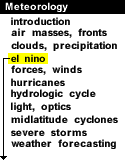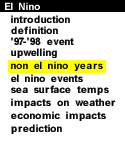
|
The easterly trade winds of the tropics drag the surface waters of the eastern Pacific away from the coastlines of the Americas. As it moves away, the water is deflected northward (in the northern hemisphere) by the Coriolis force and southward (in the southern hemisphere), causing water to move away from the equator in both directions. Upwelling in the eastern Pacific brings colder water up from deeper levels to replace the surface water that has been dragged away.
Sea surface temperature (SST) data reveals the presence of colder water in the eastern tropical Pacific. The following plot of average sea surface temperatures from 1949-1993 shows that the average December SSTs were much cooler in the eastern Pacific (less than 22 degrees Celsius) than in the western Pacific (greater than 25 degrees Celsius), gradually decreasing from west to east.
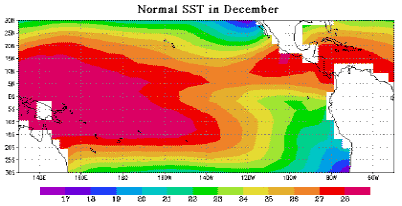
The trade winds accumulate warm surface water around Indonesia, raising the sea level roughly half a meter higher in the western Pacific. As upwelling persists, the level of the thermocline rises to shallower depths off the South American coast and is depressed in the western Pacific. The upwelled water is rich in nutrients and supports an abundance of fish and marine life.
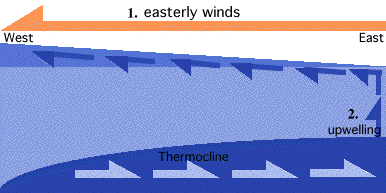
As surface water propagates westward, it is heated by the atmosphere and the sun, allowing warmer waters to accumulate in the western Pacific. The cooler water in the eastern Pacific cools the air above it, and consequently the air becomes too dense to rise and produce clouds and rain. In the western Pacific however, the overlying air is heated by the warmer waters below, destabilizing the lower atmosphere and increasing the likelihood of precipitation.
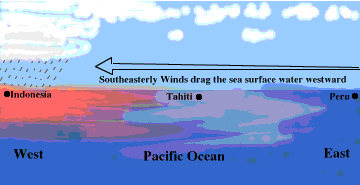
This is why during most non El Niño Years, heavy rainfall is found over the warmer waters of the western Pacific (near Indonesia) while the eastern Pacific is relatively dry.

upwelling |
|

el nino events |


